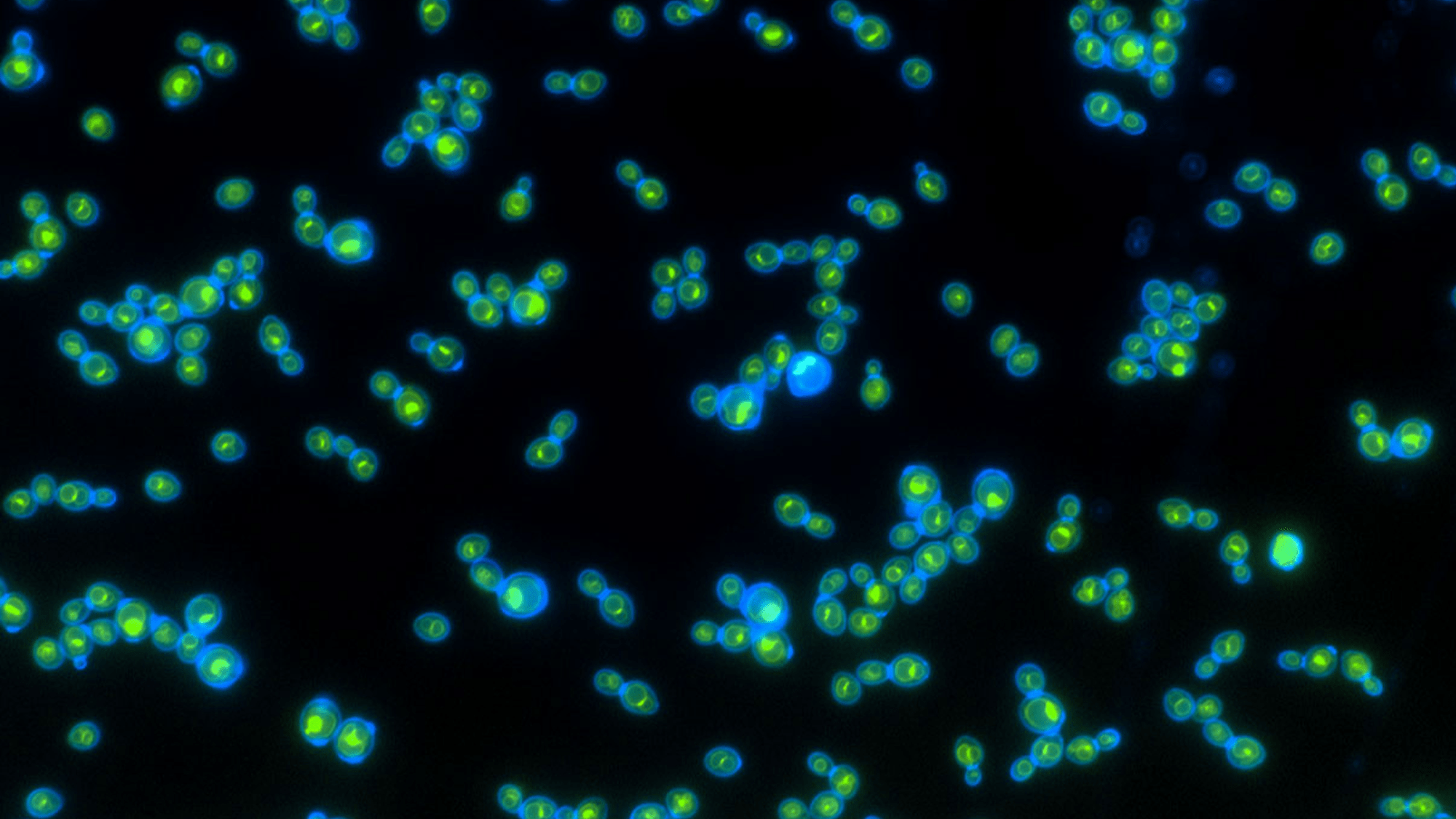

Unlike some pretty metal plants that thrive in the darkness, yeast generally doesn’t function well in the light. This fungi turns carbohydrates into ingredients for beer or bread when left to ferment in the dark. It must be stored in dark dry places, as exposure to light can keep fermentation from happening all together. However, a group of scientists have engineered a strain of yeast that may actually work better with light that could give these fungi an evolutionary boost in a simple way. The findings are described in a study published January 12 in the journal Current Biology.
[Related: The key to tastier beer might be mutant yeast—with notes of banana.]
“We were frankly shocked by how simple it was to turn the yeast into phototrophs (organisms that can harness and use energy from light),” study co-author and Georgia Institute of Technology cellular biologist Anthony Burnetti said in a statement. “All we needed to do was move a single gene, and they grew 2 percent faster in the light than in the dark. Without any fine-tuning or careful coaxing, it just worked.”
Giving yeast such an evolutionarily important trait may help us understand how phototropism originated and how it can be used to study evolution and biofuel production, as well as how cells age.
Give it some energy
Previous work on the evolution of multicellular life by this research group inspired the new study. In 2023, the group uncovered how a single-celled model organism called snowflake yeast could evolve multicellularity over 3,000 generations. However, one of the major limitations to their evolution experiments was a lack of energy.
“Oxygen has a hard time diffusing deep into tissues, and you get tissues without the ability to get energy as a result,” said Burnetti. “I was looking for ways to get around this oxygen-based energy limitation.”
Light is one of the ways organisms can get an energy boost without oxygen. However, from an evolutionary standpoint, an organism’s ability to turn light into usable energy can be complicated. The molecular machinery that allows plants to use light for energy requires numerous proteins and genes that are difficult to synthesize and transfer into other organisms. This is difficult in the lab and through natural processes like evolution.
A simple rhodopsin
Plants are not the only organisms that can convert light into energy. Some on-plant organisms can also use this light with the help of rhodopsins. These proteins can convert light into energy without any extra cellular machinery.
“Rhodopsins are found all over the tree of life and apparently are acquired by organisms obtaining genes from each other over evolutionary time,” study co-author and Georgia Tech Ph.D. student Autumn Peterson said in a statement.
[Related: Scientists create a small, allegedly delicious piece of yeast-free pizza dough.]
A genetic exchange like this is called a horizontal gene transfer, where genetic information is shared between organisms that are not closely related. A horizontal gene transfer can cause large evolutionary leaps in a short period of time. One example of this is how bacteria can quickly develop resistance to certain antibiotics. This can happen with all kinds of genetic information and is particularly common with rhodopsin proteins.
“In the process of figuring out a way to get rhodopsins into multi-celled yeast,” said Burnetti, “we found we could learn about horizontal transfer of rhodopsins that has occurred across evolution in the past by transferring it into regular, single-celled yeast where it has never been before.”
Under the spotlight
To see if they could give a single-celled organism a solar-powered rhodopsin, the team added a rhodopsin gene synthesized from a parasitic fungus to common baker’s yeast. This individual gene is coded for a form of rhodopsin that would be inserted into the cell’s vacuole. This is a part of the cell that can turn chemical gradients made by proteins like rhodopsin into needed energy.
With this vacuolar rhodopsin, the yeast grew roughly 2 percent faster when it was exposed to light. According to the team, this is a major evolutionary benefit and the ease that the rhodopsins can spread across multiple lineages might be key.
“Here we have a single gene, and we’re just yanking it across contexts into a lineage that’s never been a phototroph before, and it just works,” said Burnetti. “This says that it really is that easy for this kind of a system, at least sometimes, to do its job in a new organism.”
Yeasts that function better in the light could also increase its shelf life. Vacuolar function may also contribute to cellular aging, so this group has started collaborating with other teams to study how rhodopsins may reduce aging effects in the yeast. Similar solar-powered yeast is also being studied to advance biofuels. The team also hopes to study how phototrophy changes yeast’s evolutionary journey to a multicellular organism.
